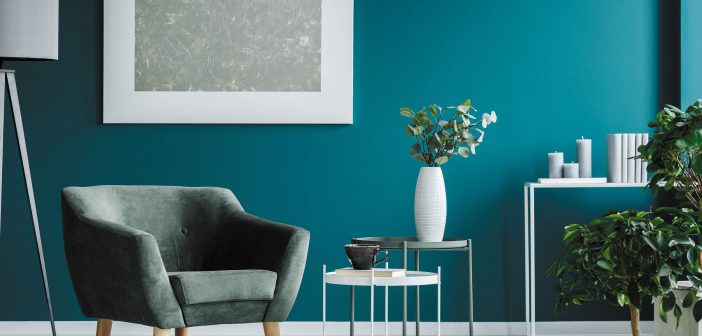What the data says about the importance of hotel design
by Stephanie Stephens
What happens when a guest walks into a hotel? The first glance around has a lasting effect – that critical first impression. Even before that, however, expectations are set well before a guest walks in the door due to recommendations from a guest’s family and friends, says consulting firm Gensler’s Hospitality Experience Index.1
“The best hotels know that designing for today’s everything/everywhere customer doesn’t mean being everything to everyone. But it does require a new approach to understanding what guests want that goes far beyond business vs. leisure or millennial vs. boomer,” the index says.
DESIGN IS ABOUT REIMAGINING
Don’t just view design as an aesthetic or practical experience. Look at design from an emotional perspective, in a psychological way, says Rebecca McBride, director of design and branding for Auric Road.2 The property management company owns Hotel Joaquin in Laguna Beach and two others with more coming. Hotel Joaquin won Hospitality Design magazine’s Lifestyle Hotel award during its 15th annual ceremony this year.
“Making a room ‘pretty’ doesn’t really connect to people on a deeper level,” McBride says. “We approach our hotels as more of an inn, with staff who are innkeepers, and we meet people on their journeys and set a tone for them.”
The company doesn’t build from the ground up. “What makes a property as authentic as possible is reviving something that’s always been there, reimagining it because it’s already grounded in the community,” McBride says. “That sense of community helps make Airbnb so popular.”
Design should “gently nudge guests out of their comfort zone,” she says. For Auric Road, that means doing the unexpected, “trying to dial things back to celebrate a more analogue lifestyle: no in-room TVs, record players with individually curated record collections, and no push-button coffee machines.”

LIGHTFIELD STUDIOS/SHUTTERSTOCK.COM
DESIGN TELLS A STORY
Though home sharing is looming over the hotel industry, the platform still has some competition from hoteliers.
“Business people traveling for pleasure want something completely different. Our guests will remember their hotel room in 20 years,” says Steve Segner, entrepreneur owner of the luxury, multi-awarded El Portal Sedona Hotel in Northern Arizona.
“Each room here tells a story,” he says. The hotel might have been built in 1910 in Arizona Territory and is furnished with period pieces. “It feels like you’ve stepped back in time or that you’re in a museum discovering a time you never knew.”
Hotel owners should be brave but thoughtful, Segner says, “to break out of the mold and add flavor from the area, if nothing else, just in the lobby. Guests really want that.”
USE SUBTLE CLUES
Acclaimed, in-demand designer Sean Knibb of Knibb Design in Venice, CA, makes welcoming spaces at hotels like The Line in Austin – a finalist for that Hospitality Design Magazine lifestyle award – and in The Line in Los Angeles.
Try to offer up just what a guest’s sensibilities desire. “It’s an environment where they live and sleep for 1.5 days,” Knibb says.
He categorizes hotels three specific ways. “Hotels should convey a sense of place, and resonate for people trying to find peace and solace, to gather themselves and their thoughts,” Knibb says. “A city hotel should try to capture energy with a party- or revelry-focused atmosphere. Or maybe it should say, ‘I just want to be rich,’ and have a luxury rich feel.”
For him, hotels are not just hotels. “Hotels can be places to centralize your business affairs, a jumping-off point to have those engagements,” he says. “They can also say something about the neighborhood, with artifacts, imagery, paintings or photography, even while referencing nature, materiality, purity, and a sense of authenticity.”
Knibb uses “subtle clues” to suggest a hotel room not too far removed from the average person. Maybe bring in those historical elements of what may remind people of their own home, “maybe something referencing antiquities, or something from everyday life like a soap dish or memento found in the kitchen, that play with old sensibilities,” Knibb says.

JULIA KARO/SHUTTERSTOCK.COM
THE NOMENCLATURE OF NATURE
Biophilic design fills the human need to connect with nature in our mostly non-natural or “built environment.” As the sustainability consulting firm Terrapin Bright Green of New York City explains in “14 Patterns of Biophilic Design,” it “can reduce stress, enhance creativity and clarity of thought, improve our well-being, and expedite healing; as the world population continues to urbanize, these qualities are ever more important.”3
The idea is “to create spaces that are inspirational, restorative, and healthy, as well as integrative with the functionality of the place and the [urban]ecosystem to which it is applied.” Bottom line: “Biophilic design must nurture a love of place.”
In another research project, Terrapin partnered with international designer of carpet tile Interface.4 Titled “Biophilic Design in Hospitality,” the 2017 report shares that a water view adds an 18-percent increase in average daily rate, and that hotel guests had a 36-percent-higher dwell rate in hotel lobbies with biophilic elements. They increase room value and they drive more time in key incremental revenue-driving areas such as hotel bars and restaurants in addition to lobbies.
For inspiration, see 1Hotel Central Park, with 200+ rooms and suites, and two doors composed of 16,000 twigs, and the 27-story Oasia Hotel Downtown, Singapore, with a living green tower.5
The October issue of the International Journal of Hospitality Management showed biophilic designs elicited stronger positive emotional and behavioral responses than the standard design. In addition, customers perceived hotels that had biophilic designs as being superior in quality.6
CO-WORK AND COLLABORATE
As the publication Commercial Interior Design reported in February 2019, laidback luxury usually means creating a “home away from home” feeling that may involve a “strong and individual narrative,” carefully curated and culturally engaged.7
Guests are experienced and informed, and they know what they want – a distinctive experience accomplished through design and tailored services, says the report. Personalize the hotel experience for guests and make it meaningful: more flexibility, technology-oriented concepts, and even experimental interiors.
Not everyone wants to be totally “laid back” with their technology. The architecture and design firm Álvarez-Díaz & Villalón of San Juan, Puerto Rico, and Miami says lots of amenities won’t go too far with poor Wi-Fi. Look for more personalization in smart tech design to control not only lighting, temperature, and audiovisual systems from a guest’s smartphone. Soon, tech may invite guests to choose bedding, toiletry items, and in-room refrigerator items pre-arrival.8
The Eaton hotels in Washington, D.C., and Hong Kong have Eaton House, with “private, shared, and communal workspaces for brainstorming and collaborating” for guests and non-guests, the latter paying tiered membership fees “to come meet kindred spirits.”9
Finally, to hit the design mark, Gensler suggests, “Make the room amazing, then go beyond.”
REFERENCES
- https://ensler.com/research-insight/gensler-research-institute/experience-index-hospitality
- http://www.auricroad.com/
- https://www.terrapinbrightgreen.com/reports/14-patterns/
- http://interfaceinc.scene7.com/is/content/InterfaceInc/Interface/EMEA/eCatalogs/Brochures/Human%20Spaces%20Hospitality%20Report/EN/ec_eu-humanspaceshospitalityreport-en.pdf?utm_campaign=EMEA_UK_EN_18_Q1_Human%20Spaces%20Reports_Download%20Confirmation&utm_medium=email&utm_source=Eloqua
- https://www.oasiahotels.com/en/singapore/hotels/oasia-hotel-downtown
- https://www.sciencedirect.com/science/article/pii/S027843191930043X?via%3Dihub
- https://www.commercialinteriordesign.com/people/42372-trend-focus-designing-an-immersive-environment
- https://www.alvarezdiazvillalon.com/room-grow-5-guest-experience-strategies-hotel-brands-prosper-2017/
- https://www.eatonworkshop.com/house/dc/statement




